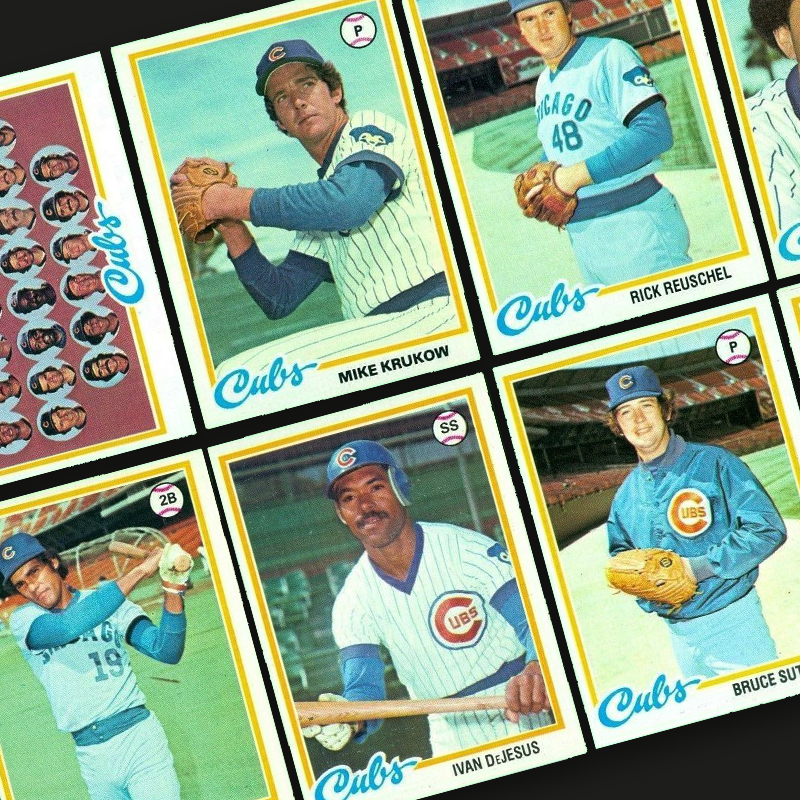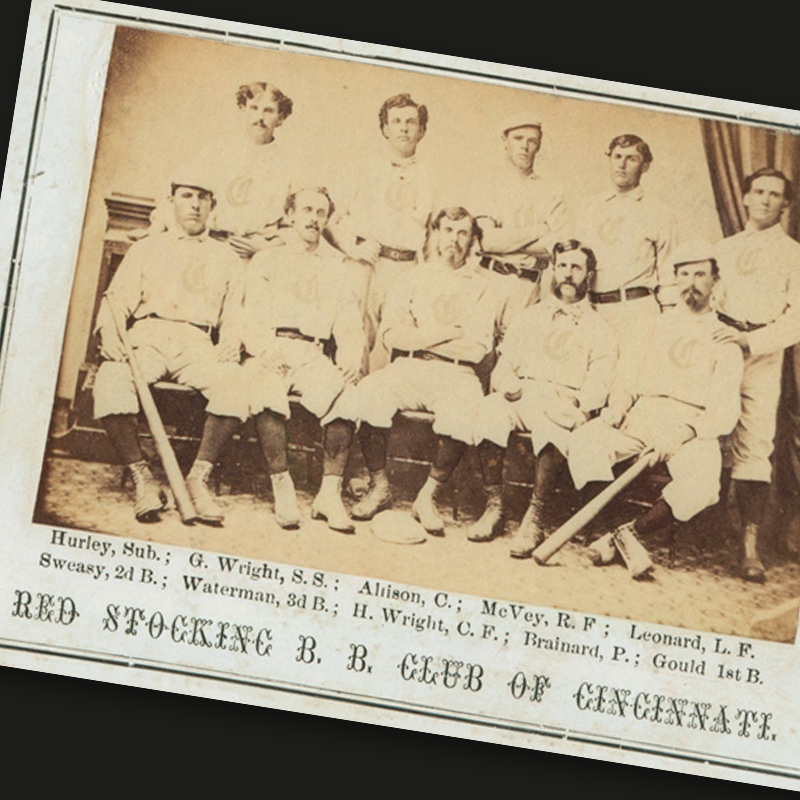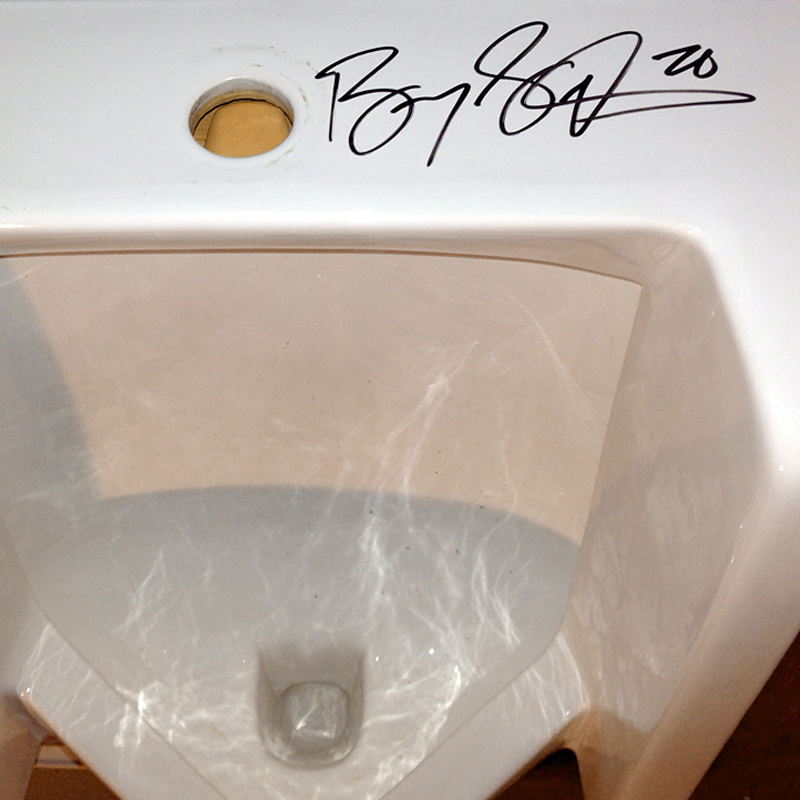ALAN GOLDSHER, HEAD OF CONTENT at Collectable
It might be something small and personal, say the Randy Johnson Montreal Expos rookie card featuring a mere glimpse of his burgeoning mullet.
It might be something big, red, and sexy, like a Michael Jordan game-worn Bulls road jersey.
It might be something weird and random (and somewhat gross), something along the lines of Nolan Ryan’s jock strap…and yeah, that was a thing.
Or it might be something really freaking expensive, like the gloves Muhammad Ali wore when he beat up Floyd Patterson.
It is sports memorabilia, and regardless of what kind of bad stuff happens in the world of sports—labor disputes, questionable off-the-field behavior, a really dumb trade—these gems—the cards, the equipment, the clothing, and yes, the jock straps—will always remind us of the good.

When collectors first begin collecting, the vast majority aren’t Collectors with a capital “C.” They just want neat-o sports things for strictly personal purposes. For instance, if you’re like me, you bought baseball cards for three reasons:
ONE
To scarf up the coolest looking cards, obviously.
TWO
To acquire cards featuring all the guys from your team. (Me, I was all about the early-‘70s Chicago Cubs, a roster populated by the likes of Manny Trillo, Ivan DeJesus, and Steve Ontiveros. Those guys were pretty bad at baseball, but I needed their cards nonetheless.
THREE
To get the crappy rock-hard bubblegum that broke your teeth.
You also probably also bought team logo pennants for your walls and miniature plastic football helmets for your dresser. You hoarded every t-shirt or baseball hat your fave franchises had to offer, especially if said shirt or hat celebrated a playoff victory or—oh boy, oh boy!—a championship.
You also probably also bought team logo pennants for your walls and miniature plastic football helmets for your dresser. You hoarded every t-shirt or baseball hat your fave franchises had to offer, especially if said shirt or hat celebrated a playoff victory or—oh boy, oh boy!—a championship.
When you attended games, you probably arrived hours before tip-off, or kickoff, or the first pitch in order to hit up the players for autographs. And you probably didn’t really care which team the autographee came from—it was all about capturing the moment. Maybe you went to a Lakers/Bucks game hoping to get a signature from Magic or Kareem, but if you walked home with Ricky Pierce’s and Paul Pressey’s respective John Hancocks, it was all good.
You never once thought, I should hold on to this autograph/pennant/plastic helmet, cuz it might be worth something someday. All you needed was a memento.
You wanted a piece of the team because the team was a piece of you.
Today, however, you might well be kicking yourself for not treating your collectables with a tad more reverence. Y’see, that 1991 Miami Dolphins pennant you threw out before you went to college, or the 1977 Toronto Blue Jays t-shirt that your ex “borrowed,” or that game program with Hakeem Olajuwon’s signature that you used as a coaster are probably now worth something to somebody.
Hell, that somebody might’ve even given you a hearty chunk of change for your beloved childhood sports stuff.
But you didn’t know that.
But now you do.
And now that you know, you’ve re-embraced your passion, and you collect sports memorabilia.
And it feels gooooood.

Nobody can definitively say, “The first sports memorabilia went on sale in [fill in the year],” but it’s fair to posit that the concept of collections honoring the games we love began with the advent of the baseball card.
The first baseball cards were foisted upon the world in the late-1860s, and one of the initial foisters was a New York-based sporting goods company called Peck & Snyder. As Rich Mueller wrote in Sports Collectors Daily, “Although their emotions were still raw from the war, Americans found the rapidly spreading popularity of baseball was a common ground upon which to gather. Men that only a year earlier had tried to kill each other on the battlefield were now teammates on the ballfield. Peck & Snyder Sporting Goods seized the moment and combined sports and pictures into one. Baseball fans no doubt loved it.”
An exceedingly dramatic take on baseball cards, certainly…but maybe not that dramatic. If you adore a player or a team, these kinds of goodies are as good as it gets.
Former SportsCenter anchor and political pundit Keith Olbermann—who refers to himself as a baseball nerd, something borne out by his, um, let’s go with enthusiastic delivery of MLB highlights—is more pragmatic about the early days of baseball cards, pointing out that they were initially utilized for sales and logistics.
“[Cards] were means of advertising, they were the stiffeners in the packs of cigarettes, they were sold with slabs of taffy, they were found in boxes of cornflakes, [and] they doubled as tickets.”
These cards became what we would consider to be collectable relatively quickly, and several canny tobacco companies—among them Goodwin & Co., Allen & Ginter, Buchner & Co., Mayo & Co., Yum Yum, S.H. Hess, and Four Base Hits—hopped aboard the train, inserting photos of baseball players into their packets of chaw. As one might imagine, these items are unbelievable sought-after today; a mint condition Yum Yum card from 1888, for instance, has been appraised at $750,000.
It got real in 1950, when a company formerly called American Leaf Tobacco decided to try and amp up sales in their bubblegum division by including baseball and football cards with the gum. (Think about that for a second: back in the day, the gum was more valuable than the cards.) The company—which had created an offshoot called Topps two years prior—went on to dominate the sports card industry.
Three decades later, the burgeoning sports collectables industry, such as it was, made a major pivot.
In the early-1980s, all four of the major American sports leagues—MLB, NBA, NFL, and NHL—started selling jerseys, some authentic, some replica, which got collectors all a-flutter. (For the record, in 1987, I bought myself a big, red, sexy Michael Jordan jersey. And it wasn’t a replica. And it’s long gone. Oops.)
Soon thereafter, sports collecting went way beyond jerseys and cards. Fans found themselves with access to basketballs, baseballs, and footballs that were either signed, or were used in an important game…or, in a perfect world, both. Game-worn gear, be it a hat, a helmet, a shirt, or even a batting glove, were huge. Trophies and championship rings were huger. Even a vintage autograph or an old-timey publicity photo could fetch a pretty penny.
It wasn’t long before sports memorabilia shops became a major deal. The advent of the online buying and selling of memorabilia around the beginning of the 21st Century further increased the value of the industry, an industry that’s currently worth, depending on who you ask, anywhere from $5.4 billion to $14.57 billion.
But worth is in the eye of the beholder, and for most sports memorabilia beholders, it’s not just about the benjamins.
Thomas Tull is one of the most successful film producers in history, having helped bring The Dark Knight, The Hangover, Jurassic World, and Straight Outta Compton to the screen. As of this writing, Forbes estimates Tull’s net worth at $1.2 billion, a notable piece of which the movie mogul spends on memorabilia.
A guy with that kind of money in the bank doesn’t need to earn a buck off of his collectables, so for Tull, it’s about the love of the game. In 2014, he explained why he drops so much cabbage on cards:
“For me, it is wonderful to be able to look at and be surrounded by the things I love. I want to be able to share my collection with friends when they visit me. If I didn’t have them on display, I couldn’t enjoy the collection the way I would want to, plus it is always fun to see the reactions and excitement from friends that are fans. I recently had my friends John Henry and Tom Werner, owners of the Boston Red Sox, to dinner and they asked me if they could see some of the Ted Williams items in my collection. When we looked at the items I could see a genuine excitement on their faces, and it reminded me that even owners of ballclubs still have reverence for the history that collecting inspires.”
Tull added that memorabilia newbies should kick off their collecting life with items about which they’re passionate. “The biggest thing is to decide what you like before you get started. I would suggest trying to organize yourself around the things that have special meaning to you and then build upon that foundation. There are so many auctions and collectibles being offered all the time. If you don’t become disciplined in your collection, you can end up driving yourself crazy.”
For others, the road to memorabilia wheeling and dealing came about for familial reasons. This was the case with Ron Inden, a Chicago-based buyer and seller.
I have been involved in the sports memorabilia business since I was a kid. My dad told me to find something that interested me where I would learn about business, and interacting with people. I, like most people, quit messing with this stuff after High School, and maybe dabbled here and there. My son had a seizure condition when he was six, and was forced to not play any sports. It crushed me, as sports in my opinion help mold a boy into a man. Sports can teach many things. So, I got him interested in sports cards. The business had grown to be quite expensive since I was a kid, so I had to re-enter the business part of it to pay for his hobby. It sparked my interest again, and, well, the rest is history.
Then there’s Justin Cornett, whose approach to collecting combines passion with financial acumen…but mostly financial acumen.
The Principal Owner of Liquidity Partners in Houston, Cornett has acquired his fair share of cool sports stuff—one of his earliest, most prized items was a Nolan Ryan rookie card (and not a jock strap, thankfully)—but for the most part, the dude uses his memorabilia collection to get paid, and he chooses most of his purchases with that in mind. In 2018, Cornett cited anything related to the Sultan of Swat as an example of a killer long-term investment.
Babe Ruth and his legend will be around forever. It will always have value. No bad management, no scandal nor any random social or economic trend change can alter the fact that Babe Ruth was and likely will always be the greatest player to ever live. As an investor, I prefer to have a portion of my assets invested in items that are associated with legends that are safe now and in the future. I compiled a list of whom I felt were the most legendary players—names like Babe Ruth, Ty Cobb, Lou Gehrig, Ted Williams, and Mickey Mantle to name a few—and then made the decision to purchase the rare and high-end graded examples of cards and memorabilia associated with them that I could afford. I strongly believe that rare and high-end graded examples of cards and memorabilia—bats, gloves, signed balls, game-worn uniforms—associated with the top legends of the game should always be in demand and command top dollar.
And this, ladies and gentlemen, is why Justin Cornett is a successful businessman…and a successful memorabilia-ist.

Maybe you use your memorabilia collection to create a family bond like Ron Inman. Maybe, like Tom Tull, you want awesome things to show your pals. Or maybe you want to pad your bank account, a la Justin Cornett.
Regardless of your motivation, there’s no need to defend or diminish your passion. If you want to write a 3,000-word blog post about the 1983 Tony Gwynn rookie card you just bought, go for it. If you have the means to drop $7,000 on an autographed game-worn Dirk Nowitzki jersey, drop away. Or if you feel like buying a urinal signed by Barry Sanders, hey, it’s your world, have a blast.
Gwynn, Nowitzki, and Sanders ain’t exactly small potatoes, but some would argue that the most fun one can have in the sports memorabilia world is landing either full or partial ownership of the item of your dreams.
If you’re a baseball fanatic/historian, imagine having a piece of a Babe Ruth or a Lou Gehrig collectable. Even the hardest of hardcore Red Sox fans would have to admit this kind of Yankee stuff is badass.
Basketball fans will freak out if they could point to gear from the likes of Michael Jordan or Kawhi Leonard and tell their buddies—or brag to their buddies—“See that? Part of this belongs to yours truly.”
And then there’s Holy Grail of memorabilia, something utilized by The Greatest himself, Muhammad Ali.
Even a small taste of The Greatest tastes as great as it gets.
But when it’s all said and done, the biggest key to collecting sports memorabilia is amping up the fun factor. Sure, if you do your research and make smart decisions, your collection could become a solid, even spectacular financial investment. But if the process and the full or partial ownership don’t get you all warm and fuzzy—and if you don’t love your cards, your jerseys, your gloves, your hats, your helmets, your autographs, your jock straps, and your urinals—goodness, you are missing out.


